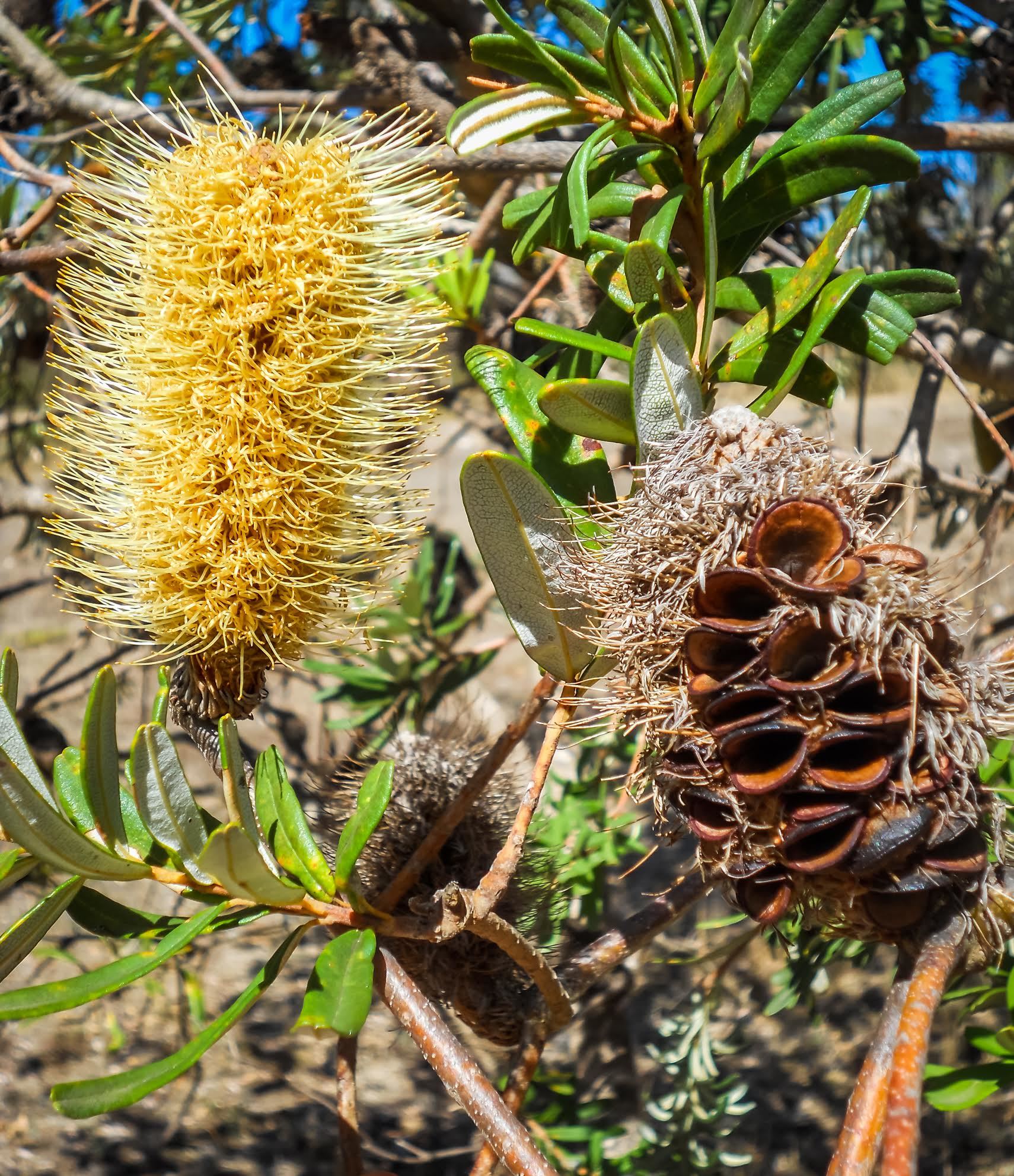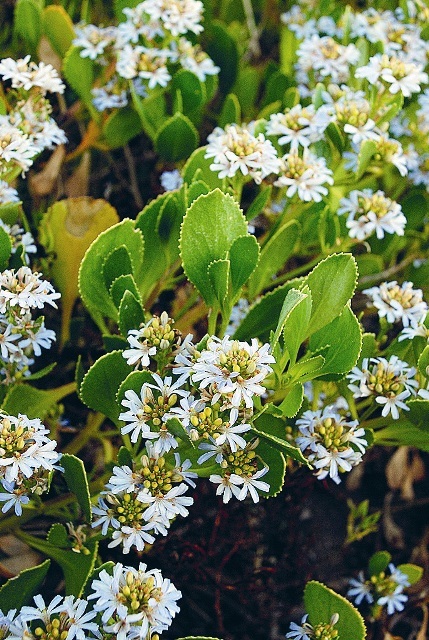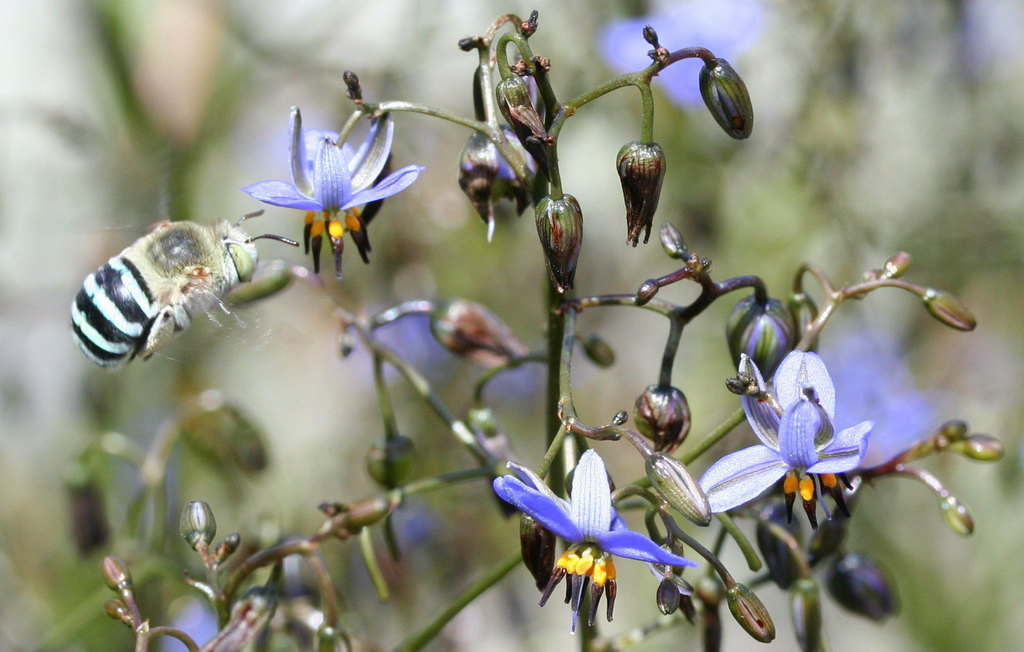If you live on or near Adelaide’s coastline you know how hard it can be to keep a healthy-looking garden. Here’s 5 native plants that were made for life around the coastline.

The salt and cool breeze of Adelaide’s coastline is refreshing to feel, but not for every plant. The effects of the coast – sand, salt spray, wind – can be felt up to about 5 km away from the coast, and many plants are not built for that lifestyle.
There are some special plants though, that love life near the sea. These plants are built for the salty and cool environment. You can buy them from local native plant nursery.
Here’s 5 of the best native plants for your home, holiday house of business garden near the sea:
1. The feature tree: silver banksia

Looking for a plant that will really transform your yard? Try this striking tree out for size.
Silver banksia (Banksia marginata) has distinct gold and silver serrated leaves, and yellow flowers that are loved by honeyeaters, parrots, cockatoos, butterflies, moths, and native bees. It also has cool wooden seed pods that can be used for displays or nature play.

While it’s a fan of full sun, silver banksia prefers to be sheltered from direct coastal winds and salt spray. This just means you can’t plant it directly on the coast.

2. The alternative to a fence: cushion fanflower
Cushion fanflower is a great option for a low hedge in your garden. You can use it to section your driveway, walkway or between your house and your neighbour.
With its pale purple to bright blue fan-shaped flowers, it’s a much prettier alternative to a conventional fence. It only grows to 1.5 metres, so low enough (depending on how tall you are) that you can still pop your head over to say ‘hi’ to the neighbours.

Butterflies will thank you for choosing this plant over a fence – especially the beautiful Australian painted lady (Vanessa kershawi) – as they can’t get enough of its nectar.

3. The one succulent to rule them all: Karkalla
Succulents are trending and if you don’t have Karkalla (Carpobrotus rossii) succulent as part of your garden you’re missing out.
Karkalla (named by the traditional Kaurna people of Adelaide) has beautiful pink flowers and helps stabilise sandy soil, can trail down rock walls and is even happy living in a pot. It has no problem with salt spray, wind or sand blasting, so it is an excellent choice if you live directly on the coast.

Top tip: When buying a karkalla be wary of imposters! Check that it has the scientific name of Carpobrotus rossii.

4. The blue-banded bee attractor: short-stem flax lily
For a plant with dainty-looking flowers, short-stem flax lily (Dianella brevicaulis) is deceptively hardy for life on the coastline. It’s great as a border plant (think: creating an edge around your lawn or garden bed), looks delightful in large or small gardens, and can live happily ever after in a pot by itself.

Short-stem flax lily is what’s known as a clumping plant, meaning that it grows multiple leaves (see the picture below). You can expect it to reach about the height of your knees.
Native birds and lizards love munching on its berries and insects, including the show-stopping native blue-banded bees.

While it is happy living in a coastal area, it prefers to be on the back streets or protected by a fence instead of smack bang on the coast.
Bonus tip: This plant can even live indoors!

5. The #InstaWorthy climber: sweet apple-berry
If you’re planning a coastal garden that stops Instagram feeds, go for the sweet apple-berry (Billardiera cymosa).
As a climber plant, this species is a great pick for a recycled timber feature posts, trellis or archways. It can also make a lovely shrub in your garden too.

Keen for more coastal plant tips?
There are many other coastal plants around.
To learn more download our coastal gardens planting guide (PDF).
Find out more local gardening tips
Just beginning your gardening journey? Head to our gardening hub for more tips and tricks.
This story was originally published in February 2022.